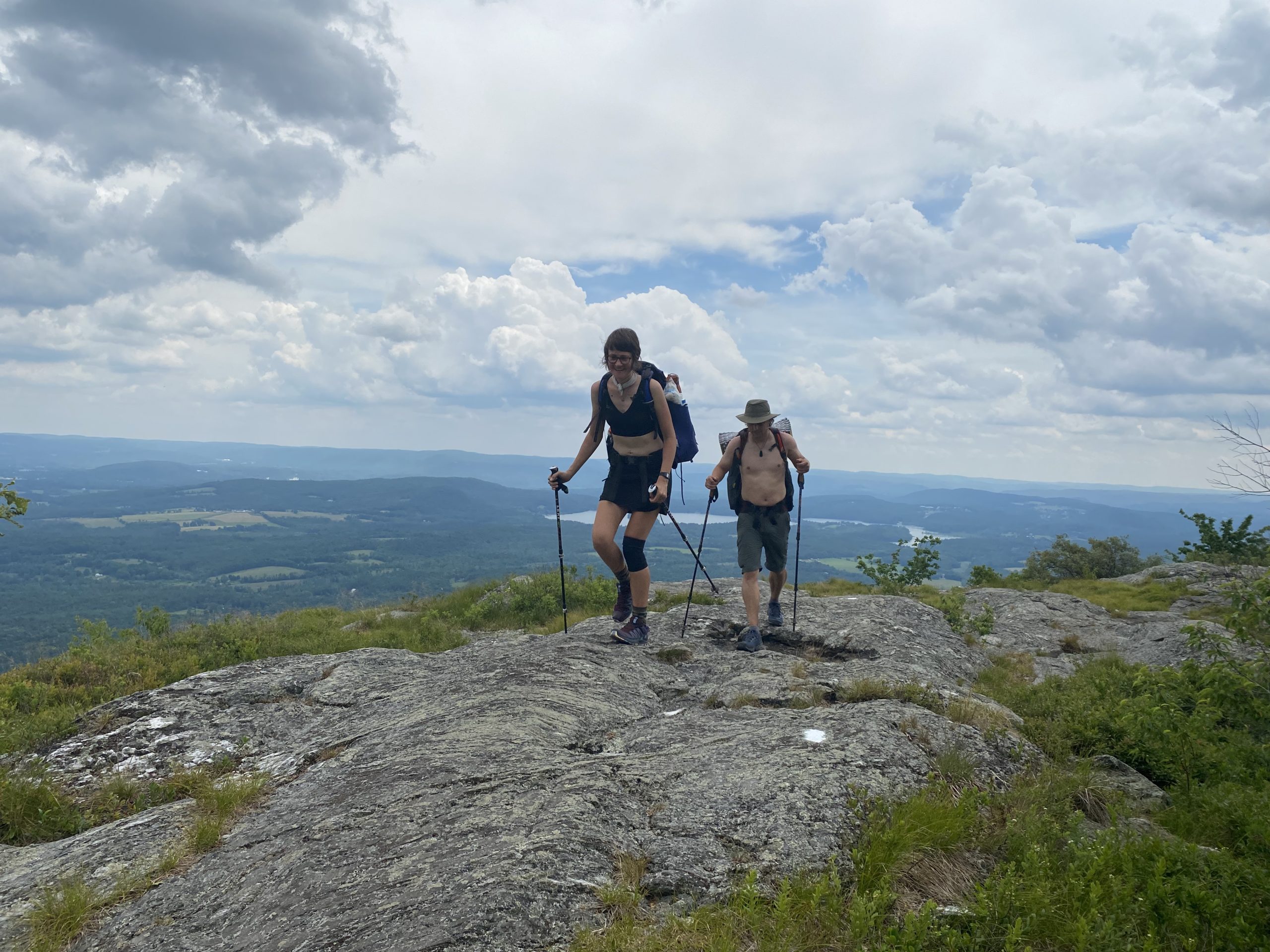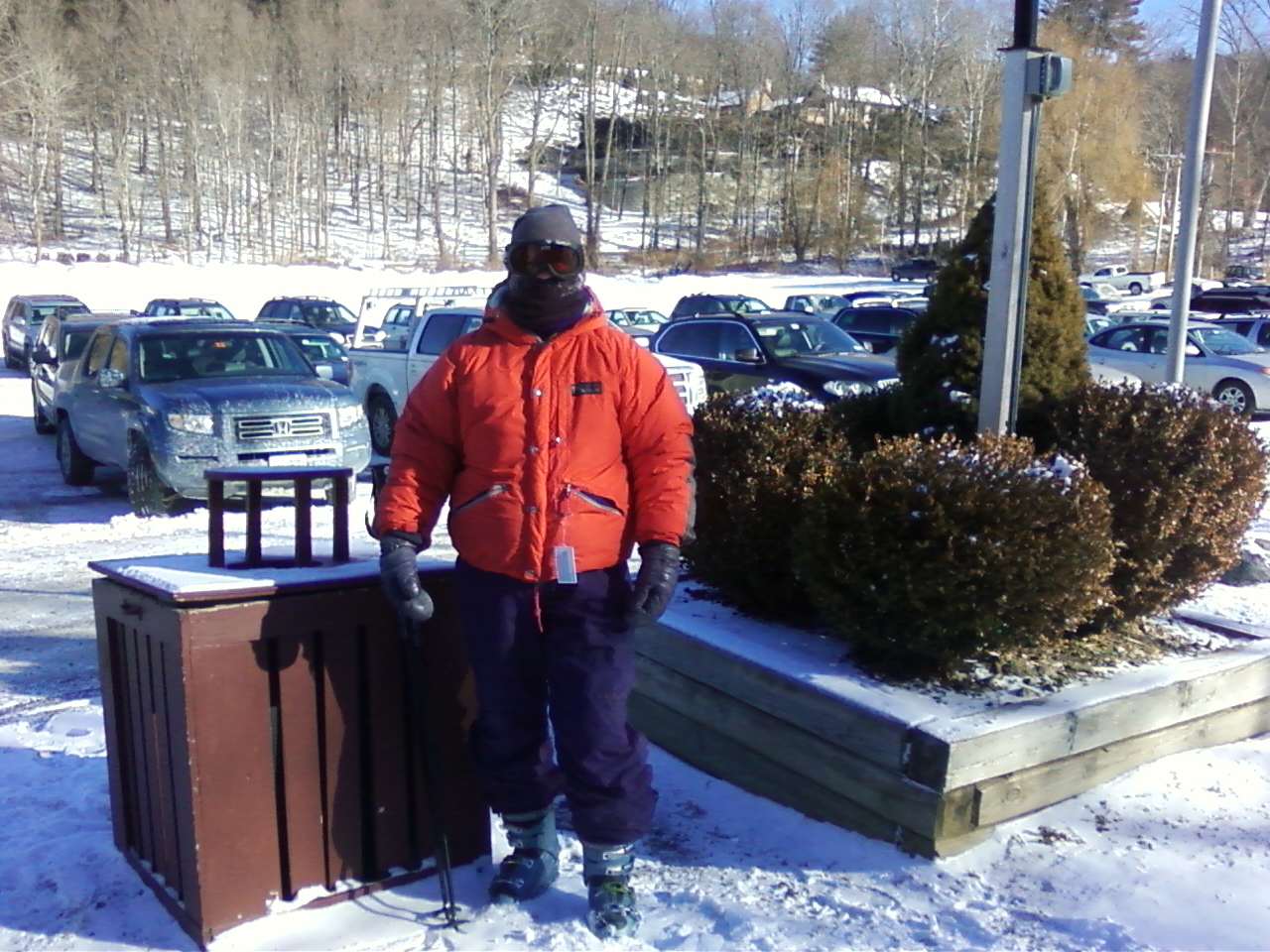Go over there and read it!
I have to admit that I don’t take the same approach to instructing lightweight hiking as many of my long-distance hiking peers do, so if you’re reading here, it’s probably a good thing for you to explore elsewhere as well (and Mark’s site has a great blogroll, with links to a lot of other cool hiking sites). On teaching about this topic, I’m a LOT more conservative, both in how I define lightweight hiking and in how I suggest people approach it. The goal is the same, but my path is a little longer.
This is partly because as a teacher I know that once the information I share with my readers leaves my fingers, I have no control over it. It’s like a game of telephone: Words get distorted or sometimes misunderstood, and the message can get boiled down to something different. “Don’t take anything you don’t need” ends up becoming (and I have personally seen this happen, and I promise I am not making it up) “I didn’t take my rain jacket into the White Mountains because you said to ditch gear I didn’t need, and I didn’t need rain gear here last time.”
The result — in that environment — CAN be fatal.
If I’m there in person I can say “Whoa! Not so fast cowboy.” In writing, I have to be more careful.
I think what is sometimes missing in on-line discussions about lightweight hiking is the realization that experience and judgment in rough conditions are a crucial part of the equation you use to decide which gear to take for what type of hike. It seems to me that a lot of on-line discussions simply assume that because something works for the writer, it should work for every reader.
One of the things I appreciate about Mark’s site is that it is reader-focused. He’s not didactic, and he doesn’t get weighted down in picayune arguments about brand names and definitions of what exactly is ultralight versus extreme ultralight and all that nonsense. He’s just trying to help you get more comfortable.
My own approach to the topic, though, is a bit more step-by-step. My book, Hiking Light Handbook, deliberately avoids recommending cutting straight to “ultralight hiking strategies.” In short, I think you need to have shivered your tail off in an above-treeline August snowstorm before you start paring your gear to the bone for a high-mountain expedition. I figure that the people who are ready to do, or are already doing, the hardcore ultralight thing don’t need me. (If that’s you, DON’T buy my book, but instead, click on the link to Mark’s site.)
 |
| Hiking Light Handbook |
But if you are someone who carries 30- and 40- pound backpacks for a summer four-day hike in Pennsylvania, I’m going to help you cut your weight to something reasonable. I’m pretty sure that once you feel the difference between 30 pounds and 20 pounds, you’ll want to pursue other cuts, according to experience, preferences, and hiking style. A PodCast I did with practical backapacking covers some of these issues in more detail.
Another thing Mark points out that I think is really important: Manistream manufacturers and gear reviewers at many outdoor magazines, continue to CALL things lightweight that aren’t — a five-pound tent, for instance. A four-pack pack. Sayin’ don’t make it so. Mark’s site gets right to this issue with with practical guidelines as to what is and isn’t lightweight, along with simple compare-and-contrast examples. It’s extremely useful to have these benchmarks in mind when shopping for gear, lest a salesperson convince you that a three-pound sleeping bag is a reasonable choice for the mid-Atlantic in July (it’s not).
In recent years, reasonably priced, durable lighterweight gear is much more available on the general market than it used to be. So it’s perfectly possible — indeed, it’s ridiculous NOT to — have the total of your three heaviest items (sleeping system, tent, and pack) weigh in at six pounds or less. Once you’ve done that, everything else seems to fall into place.
I got suspicious about lightweight hiking back in the early days when I saw lightweight hikers suffering from poor gear choices in extreme conditions. I got sold on it not by people preaching about it, or books, or arguments on the Internet: I was sold on it when I hiked with a friend who could pick up her fully loaded pack with her PINKY finger… and when I saw, out in the field, that she had everything she needed for the conditions we were in.
Hiking light is about making the right choices — for you, your style, the conditions, and your level of experience.
If that sounds like something you’re interested in, hightail it over to Mark’s blog to learn more. And if you need a step-by-step way to get started, check out my book.


Salient points, Karen. Experience is a must when cutting down what you take, and in choosing more ultralight gear. I generally advise testing new techniques and gear in a local, familiar environment before heading out into the unknown.
Thanks for the post and generous comments! I did see your book on Amazon while grabbing the links for the others. I should order a copy and add it to the links on the Makeover page.
Thanks Mark — Just be sure readers know it’s for beginners in this area… your already-experienced ultralighter isn’t going to get anything out of it, but your typical person on a summer trail could learn to dump 40 percent of their packweight.